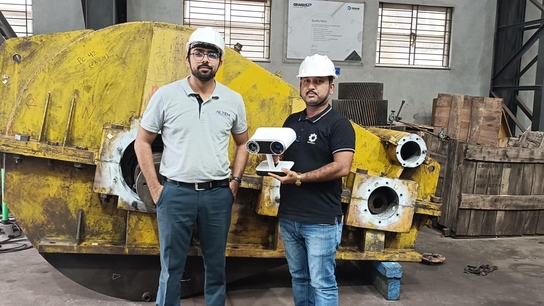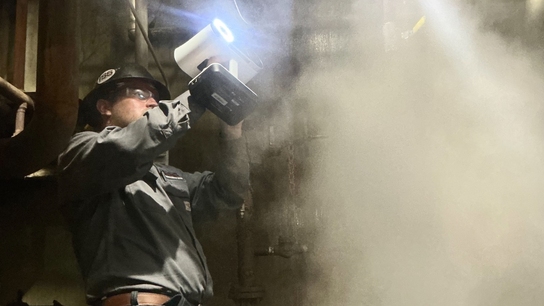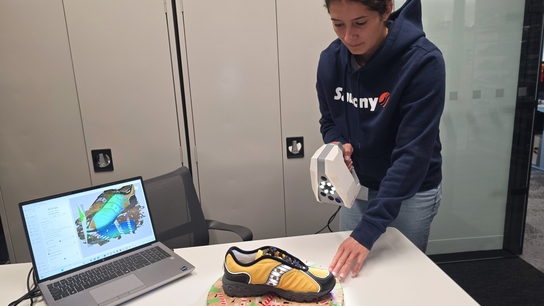Digitally capturing astronaut suits with Artec 3D scanners
The Goal: To digitally capture the spacesuit in precise color 3D as it's being worn by an employee, using a handheld, precision 3D scanner, in under ten minutes.
Tools Used: Artec MHT, Artec Studio
Recently, Artec employees visited NPP Zvezda, a unique enterprise in Russia, which produces individual life-support systems for pilots and astronauts. The task was to scan a Sokol-KV-2 spacesuit, which astronauts wear when facing the highest risk of depressurization. These suits are very light (weighing about 8.5 kg). They have been used since 1979, and up to today there has not been a situation in which they have failed. An Artec MHT scanner was used to obtain a three-dimensional copy of the suit for its subsequent integration with a 3D spacecraft model.
This is a “step-by-step” of how that model was obtained:



- An employee wore the spacesuit (the suit is functional and has previously been in space for 6 months) and sat in a special device which mimics a shock-absorbing seat. Everything was organized in a way which most closely replicates the astronaut's posture during takeoff, landing and other situations associated with the greatest risk.
- The spacesuit was inflated with air until adequate pressure was reached. Then, it was time to start scanning! To capture the spacesuit, an MHT scanner was used. This specific scanner model was designed for accurate scanning of medium-sized objects and, captures color data as well. For further calculations, accuracy during scanning is of the most importance. If not precise, an astronaut may face a situation of depressurization while in space.
- The suit was scanned in 10 minutes and the process went smoothly. The man wearing the spacesuit had to maintain a specific position and hold still during scanning. When scanning was completed and the suit was deflated, the “Zvezda” employee who was scanned, said, "Hello Earthlings," which made everyone smile. The 3D model that was produced with the help of Artec’s scanners and Artec Studio software is to be used in a three-dimensional model of a spacecraft which will then be used to design a new spacecraft. “Zvezda” employees believe that 3D technology plays, without a doubt, an important role in the development of the space industry.
One of the engineers involved commented: "What we were not able to see on paper and in the blueprints, we are able to see with three-dimensional technology. Working with 3D models is of great help when designing a new spacesuit. It can be aligned to another chair, rotated, angles may be changed – this is all possible with the help of the resulting 3D model."
"Zvezda" employees are now considering using 3D scanners for other tasks. For example, the possibility of applying this technology to develop individual custom seating on board a spacecraft (adapted for each astronaut's body). Making these seats as comfortable as possible is an important task, since this is where the astronauts spend most of their time in space. Therefore, by making them more comfortable, astronauts would be able to be in space longer.
Currently, the custom seating production department uses an older technology that is reminiscent of that used in the orthopedic industry. First, a mold of the astronaut’s back is made and then it is sent to specialists who make the seat with the help of hand measuring tools. Naturally, desired accuracy is seldom achieved.
Moreover, the developers and engineers are considering using the scanner to digitize a soft-shell suit. These suits, currently in development, will give the wearer greater mobility of their arms and hands, enabling them to use a variety of small instruments. Artec team is proud to have participated in this exciting project and is hoping to hear from scientific and research organizations about how 3D technology can be useful in other ways in the space industry.
Scanners behind the story
Try out the world's leading handheld 3D scanners.





